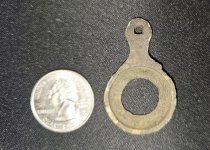Pops1959
Jr. Member
- Feb 8, 2018
- 23
- 26
- Detector(s) used
-
Garrett ACE 400,
Minelab X Terra 705,
Minelab Equinox 600
Garrett "Carrot" Pin Pointer
- Primary Interest:
- All Treasure Hunting
I am basically returning to detecting after a twenty year hiatus. I am not in the process of determining what metal detector will fit my needs and budget. But while these is much I still remember, so much has changed technologically from when I had my old C-Scope. On several of the units I am looking at the specifications state "ground balance all the way to salt." What exactly does this mean and how important is this? Any help appreciated greatly.
Upvote
0





